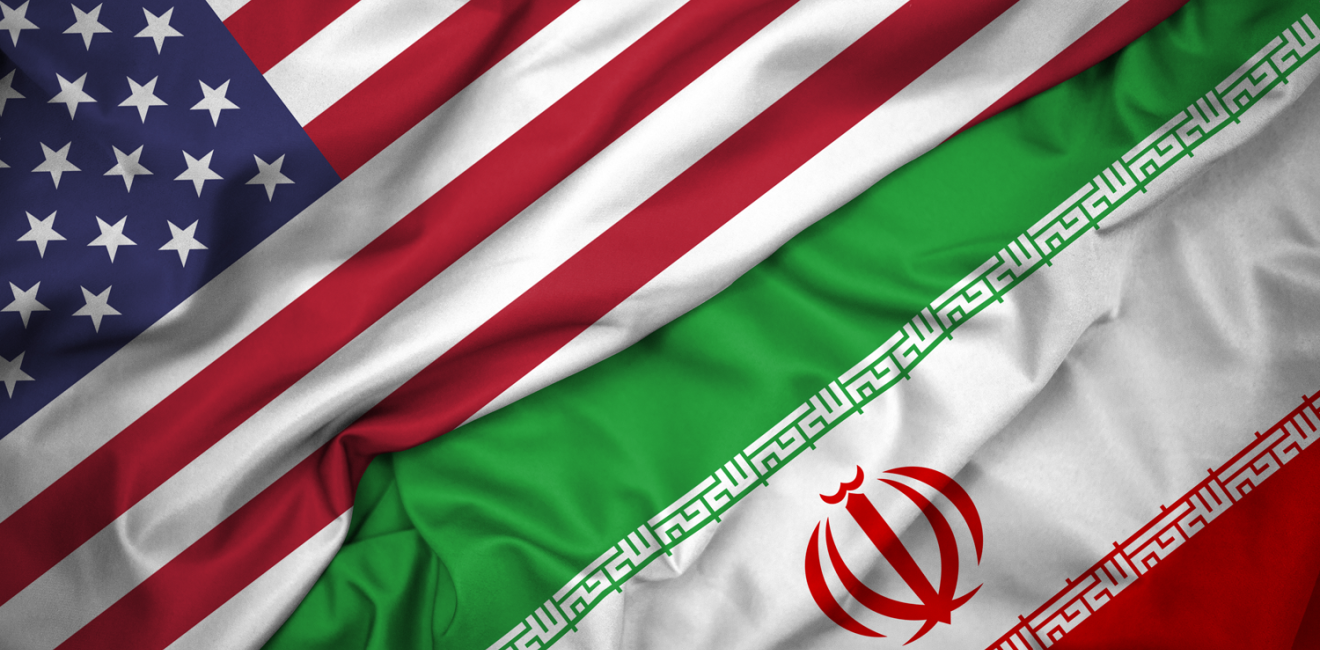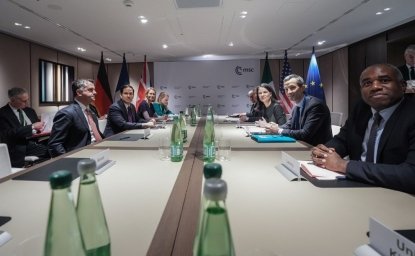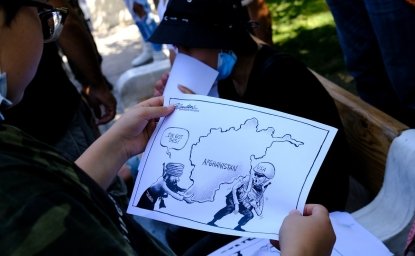The US strikes against Iranian proxy targets beginning February 2 differed from previous Biden administration responses to proxy attacks in size, number of targets and strategic assets used. Technically, the attacks succeeded, targets were struck, and aircraft all returned. But real success means that, first, Iran and proxies must dramatically dial back attacks on US forces and, second, the US must adopt a different approach toward Iran’s long-standing irregular war against the regional order.
Since the October 7 Hamas attack on Israel, Iran’s surrogate-led campaign against that order has been expanding, including over 150 missile, drone, and rocket attacks on US forces in three countries by pro-Iranian militias, in addition to 50 attacks on international shipping by the Houthis in Yemen, and missile strikes in Pakistan, Syria, and northern Iraq.
The United States and its allies in the region have thus far chosen to focus on the direct perpetrators of these attacks rather than their sponsors in Tehran.
Strategic shifts
The United States and its allies in the region have thus far chosen to focus on the direct perpetrators of these attacks rather than their sponsors in Tehran. While avoiding a wider war with Iran is smart policy, the reaction to the latest provocation must not be undertaken in a vacuum. To be sure, the administration sees Iran as trouble, but only through the lens of specific problems, such as supporting terrorists and pursuing nuclear weapons. It has not yet been made clear to Americans that Iran is the number one security problem in the Middle East, even though the US regional military headquarters, CENTCOM, lists Iran as its primary threat.
The Biden administration has performed admirably in countering threats to international order from Russia and China because it organizes its entire European and Asian policy around containing those states. Washington needs to recognize that it faces a similar region-wide problem in the Middle East, and then, as Clemson University’s Arash Azizi advocates, craft a long-term regional strategy with local partners against Iran’s ascendency. Thus Hamas, the Houthis, and other Iranian surrogates need to be confronted together with Iran itself.
Iran has been pursuing war against the regional order since 1979, with the goal being to drive the United States out of the Middle East, eliminate Israel, and dominate neighboring Arab states. Iran’s initial military efforts in Iraq and the Gulf in the 1980s came up short when America tipped the scales against it. Learning from this, Iran has generally avoided direct military action against states capable of defending themselves.
Instead, over the past two decades, Iran has availed itself of asymmetrical approaches. On the strategic level, it has veiled the nature of its challenge, causing many analysts to see it as seeking a limited, even defensive, adjustment to the order. At the tactical level, it used asymmetric tools, from hostage-taking to embedding fighters among civilians, to overcome its relative weakness.
The United States thus tends to conceive of Iran’s threat as too costly to confront and so has failed to contain it adequately.
Iran’s tactics
In particular, Iran’s use of surrogates, whose personnel and equipment are expendable, makes it difficult for opponents to strike at the core of the problem in Tehran. The United States thus tends to conceive of Iran’s threat as too costly to confront and so has failed to contain it adequately. Iran has also used its nuclear weapons program to cut deals: it offers to slow its nuclear progress at the price of the United States and its allies turning a blind eye to its other destabilizing regional activities.
Contrary to what some analysts believe, those destabilizing activities have not been merely defensive in nature. Iran has taken advantage of Israeli withdrawals from Southern Lebanon and Gaza and the US elimination of Iran’s arch-nemesis Saddam to dominate Lebanon, Iraq, Yemen, and Gaza while supporting its ally, Syria. In each of these states, pro-Iranian proxies not only exercise broad control but possess offensive capabilities thanks to Iranian training and the long-range missiles it has provided.
To put it succinctly, if the United States and its partners dismantle Hamas and deter the Houthis while maintaining regional unity and stopping new assaults, Iran will suffer its most dramatic setback in the past twenty years.
With Hamas’ attack on Israel, the Houthis striking maritime trade, and the escalation by proxy forces in Iraq and Syria against American troops, Iran’s advance has entered a new phase. Its approach of relying on limited, careful, non-attributable actions is becoming strained, and Iran’s denials of responsibility are less and less credible. This provides Washington with an opportunity. To put it succinctly, if the United States and its partners dismantle Hamas and deter the Houthis while maintaining regional unity and stopping new assaults, Iran will suffer its most dramatic setback in the past twenty years. But if Hamas and the Houthis emerge even partially victorious, and American casualties mount, expect ever more serious Iranian and surrogate assaults on the regional order.
Countering Iran's ambitions
To achieve this, the United States does not need more regional resources, as its military and diplomatic presence even before October 7 was sufficient. Rather, it needs a clear, coherent regional strategy. This must include supporting Israel’s military action against Hamas while resisting pressure for a permanent ceasefire at present. It also requires more serious action against Iranian surrogates, both the Houthis and militias attacking US forces, by threatening core interests—targeting key battlefield leaders, suppressing the flow of weapons, and seriously degrading military capabilities.
Experience has shown that placing such interests at risk can deter Iran and its surrogates. Israel’s devastation of Hezbollah neighborhoods in 2006 and America’s killing of IRGC leader Soleimani in 2020 are two prominent examples. Any military approach should be coordinated with Turkey and those Arab states most concerned with Iranian aggression but remain unsure of Washington’s reliability and are aligned with progress on the Israeli-Palestinian conflict and broader Israeli-Arab reconciliation.
This is not an easy strategy for Washington to pursue. It requires dealing with a rogues’ gallery of unreliable regional partners and taking on a serious risk of Iran choosing to launch a broader war in response. The Biden administration might be tempted to avoid these headaches, especially at a time when domestic opinion on both the left and right is increasingly wary of foreign entanglements. But endlessly triaging the problem has costs, too. The end of the existing order in the Middle East will not only find the United States sidelined in this vital region. It will be a setback for efforts at non-proliferation and combating global terrorism and America’s credibility in defending the rules-based international order, which includes the protection of the freedom of the seas and the unimpeded flow of energy.
The longer it takes to recognize and then act on Iran’s fundamental threat to that order, the greater the danger to American interests and the lives of service people deployed in the Middle East.








